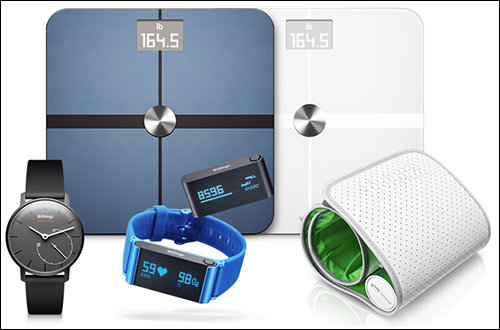When Finnish telecommunications company Nokia sold its mobile phone business to Microsoft in 2014, many devoted fans of its handsets were crestfallen. But those devotees received some good news on Tuesday, when Nokia announced its reentry into the consumer electronics space with its €170 million ($191 million) acquisition of Withings, a French maker of heath-focused IoT products, such as an Internet-connected scale and FDA-approved blood-pressure monitor.
The all-cash acquisition is expected to close early during the third quarter of this year, and would place Withings into the company’s Nokia Technologies business, the firm’s advanced technology and licensing arm. Nokia has spent the past several months building its networking infrastructure business, and in January purchased French telecommunications equipment manufacturer Alcatel-Lucent. But it has been signaling a move into the mobile health-care (m-health) market, says Jonathan Collins, a research director at ABI Research.
“Nokia started talking about m-health as a new market area toward the end of last year,” Collins says, adding that Withings, which is focused on consumer-facing IoT devices—both fitness-focused wearables and health-focused smart-home products—was a natural acquisition target. With a spare, Apple-esque design aesthetic, as well as products that appeal to early adopters in smart-home and fitness-tracking applications, Withings stands out in the market, he says.
“Withings is an interesting and innovative company,” Collins adds, “so the potential for acquisition was there, as it is for any startup with an m-health play.” Another example is Misfit, a maker of wearable activity trackers, which watchmaker Fossil purchased late last year for $260 million.
The mobile health market saw strong growth in 2015, Collins says. ABI Research estimates that 92 million products were shipped in the sports, fitness and well-being product category last year—roughly twice as many shipments compared with 2014. Demand for home health-care devices (such as blood-pressure monitors) has been softer so far, but ABI predicts shipments of those products will see a compound annual growth rate of 23 percent by 2021. Seeking Alpha estimates that the Withings acquisition could generate $500 million in annual sales for Nokia. But Collins asserts that Nokia is interested in far more than selling devices, since the larger value proposition within the mobile health industry is in developing platforms for collecting and sharing personal health data with physicians, insurers or employers.
It is not yet clear what role Nokia will play in the mobile health ecosystem. It may develop a platform that competes with Apple’s HealthKit and ResearchKit, application frameworks through which consumers can send data, collected via health and fitness trackers, to their Apple phones and then to health-care providers. Nokia’s president, Ramzi Haidamus, told Engadget that his company is developing a “digital health strategy” called WellCare, which he describes as a “secure and simple-to-use experience built around data and insight that are pulled through tracking devices.” Nokia’s website, however, makes no mention of WellCare.
At this year’s Mobile World Congress trade show, Nokia Growth Partners (NGP), the venture-capital firm owned and bankrolled by Nokia, announced a $350 million fund that the firm will use expressly to “grow the ecosystem in IoT solutions,” according to a company statement. Nokia said it would focus investments on consumer-facing products and connected health solutions, among other markets, including transportation and enterprise applications.
A recent report from Mercom Capital Group LLC says that the first quarter of the year also saw an uptick in corporate and venture funding into the digital health and health IT sector, with $1.4 billion invested through 146 deals—a 27 percent increase from the last quarter in 2015. Health-care technology companies that developed Internet of Things offerings, such as wearables and sensors, received the largest chunk of that funding, with a total of $260 million invested. Companies focused on big data analytics were the second-biggest recipient, with $197 million in venture capital.


